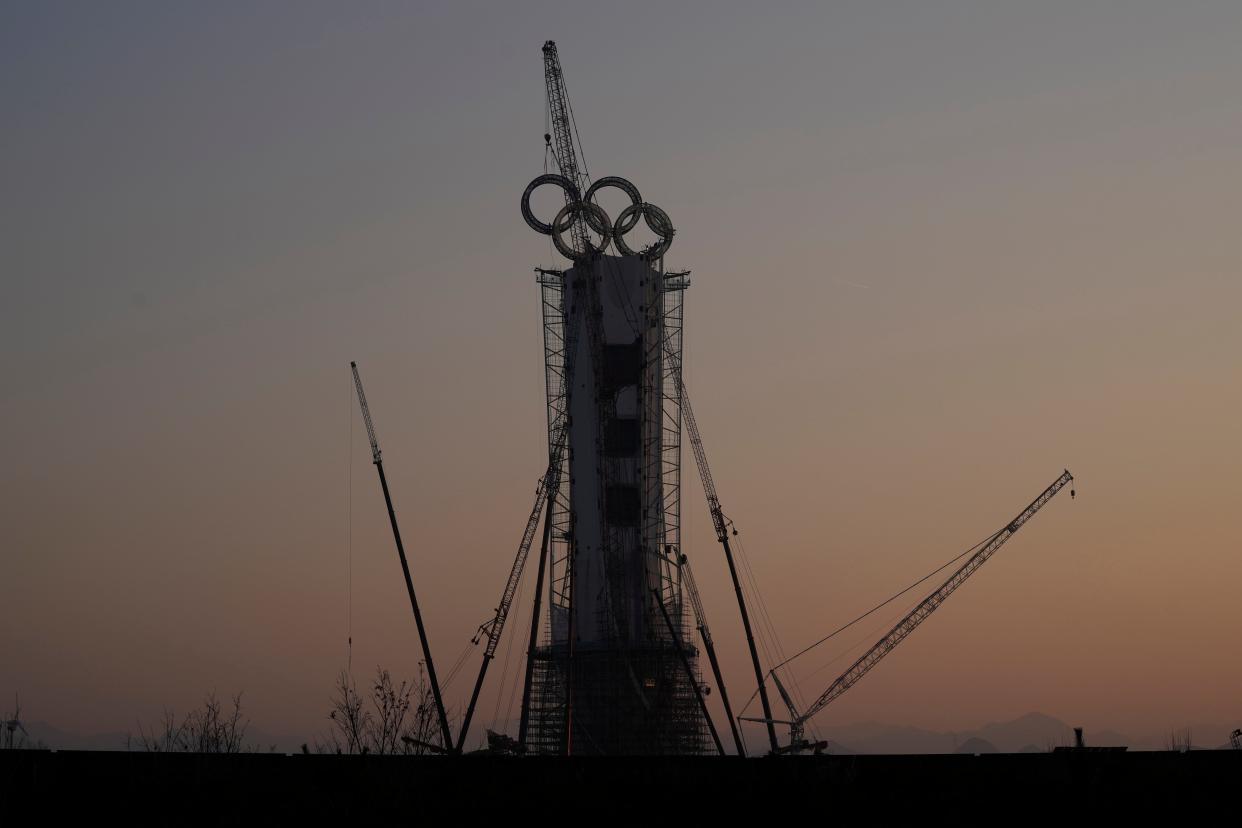Why The Silver Dragon returns to China every year

This is the first in a series of science articles themed around the Winter Olympics, scheduled for Feb. 4-20 in Beijing.
Every year in the middle of the eighth month of the lunar calendar, thousands of Chinese citizens line the streets above the Qiantang River to watch an unusual tidal wave come in from the sea, travel up the river and actually make the river reverse direction for a little bit.
That’s not all. As the tidal wave travels up the river stream, a wall of water travels with it. Eventually that energy is released as giant waves as it crashes into the shorelines. This phenomenon is a unique tidal wave called the Silver Dragon.
How do tides work?
To understand why this happens you first have to understand a little bit about tides. Every object in our universe has gravity. The force of gravity from the Earth is what keeps you on the ground.
The farther you get from the object, the weaker its gravitational pull is. Our sun has an incredible mass and, therefore, an incredible gravitational force. However, the sun is so far away that the only thing its gravitational force does for us is to keep the Earth in orbit around the sun — although that is quite important.
If we were closer to the sun, the Earth would experience more of the sun’s gravitational forces. Too close, and our planet would be pulled toward the sun and consumed by it.
Our moon is much smaller, so there is much less gravitational force. However, it is much closer to the Earth. This close distance means that the moon’s gravitational force has more of an impact on Earth than the sun’s gravitational force. This is where tides come in.
About 70% of the Earth’s surface is water and that water is constantly being pulled toward the moon. The oceans on the side of the Earth facing the moon are bulging out due to the moon’s gravity.
At the same time, the Earth spins. Therefore, the location of the bulge on Earth is constantly moving, and that movement is what makes high and low tides every day.
Bore tide
Every August, there is a day where the Earth and moon line up to cause the greatest gravitational force of the year. The ocean bulges in the area just outside of the Qiantang River.
As the ocean rises with the tide, the relatively small tidal wave starts to travel into the mouth of the river. It continues traveling as the river becomes narrower and narrower. The same tidal energy is now being squeezed into a smaller area. This makes the wave appear larger as the energy has nowhere to go but up.
The energy becomes so great that the tidal wave overtakes and reverses the flow of the river. The river is now flowing backwards, with the leading edge a growing tidal wave.
Even so, the tidal wave is not very large until it runs out of room. This is where the wave will slam into the shorelines with incredible force. This tidal wave then floods all the surrounding farmlands with saltwater, which kills the crops growing and prevents new plants from growing because they cannot tolerate the salt left behind.
To help their food supply, the city of Qiantang has built flood walls that keep the saltwater out of the farmlands, so that the soil does not become contaminated. This has been successful at protecting their food supply and keeping the town safe, but also constricts the river even more, making the resulting tidal wave collision even greater.
All of this comes together once a year to create the Festival of the Silver Dragon, attracting thousands. This is not the only location that experiences a bore tide, but its geography does make it the largest and most famous bore tide in the world.
As the region spins away from the moon just a few hours later, the tidal force will reverse and that is it. The citizens will be back in a year to welcome the Silver Dragon back home.
Mike Szydlowski is science coordinator for Columbia Public Schools.
TIME FOR A POP QUIZ
1. Why does the moon have a greater gravitational force on Earth than the sun even though the sun is much larger?
2. Why do we have high and low tides every day?
3. How is a bore tide different from a regular tide?
4. Why does the bore tide get much larger as it travels up the river?
5. Before the walls were constructed, why was it impossible to grow plants on land near the river?
LAST WEEK’S POP QUIZ ANSWERS
1. What helped so many different ant species evolve?
As the continents separated, the ants evolved new adaptations based on what was most beneficial to their new environments.
2. Why can ants be considered Earth’s greatest farmer?
Ants are responsible for tilling more land and spreading more seeds than any other animal.
3. Why do male ants only have grandfathers but no fathers?
A male ant only forms when the queen does not fertilize the egg. So, they have grandfathers because the queen had a father but they did not get any genetic material from a father.
4. In what ways do ants and plants work together to benefit both of them?
Some plants have developed strategies that reward ants for spreading their seeds.
5. Why is it likely that every ant that you have seen is a female?
Males are only kept in the colony until it is time to send them off to mate and then they are not allowed back and die.
This article originally appeared on Columbia Daily Tribune: Why The Silver Dragon returns to China every year

